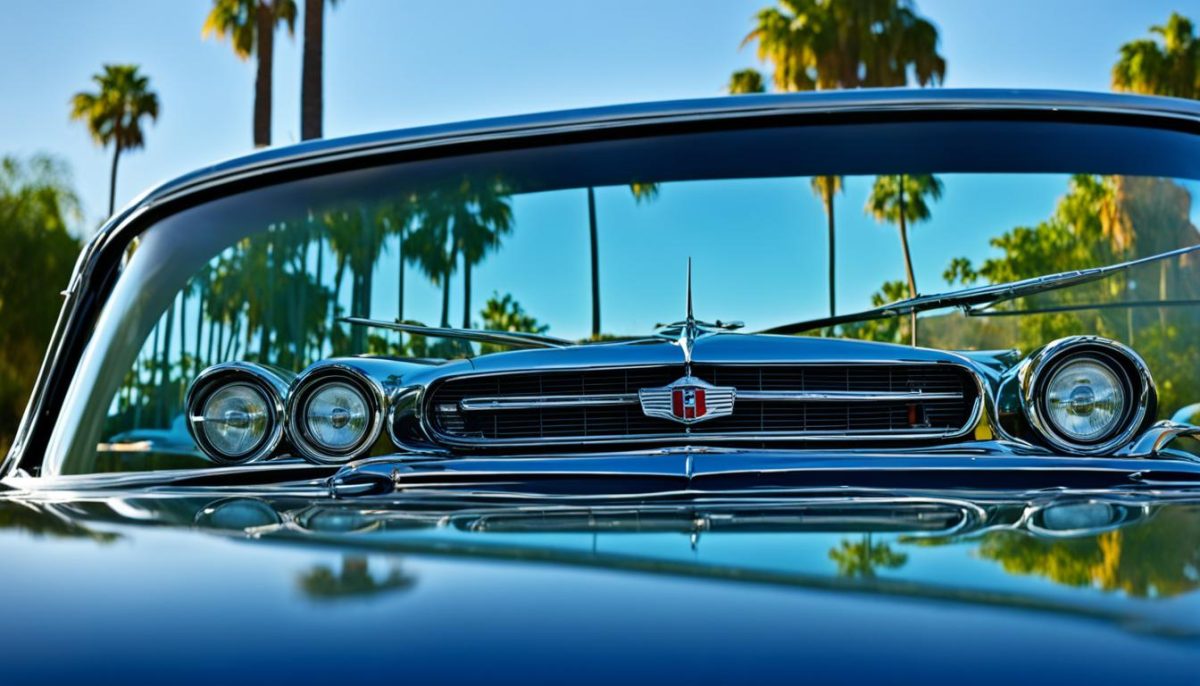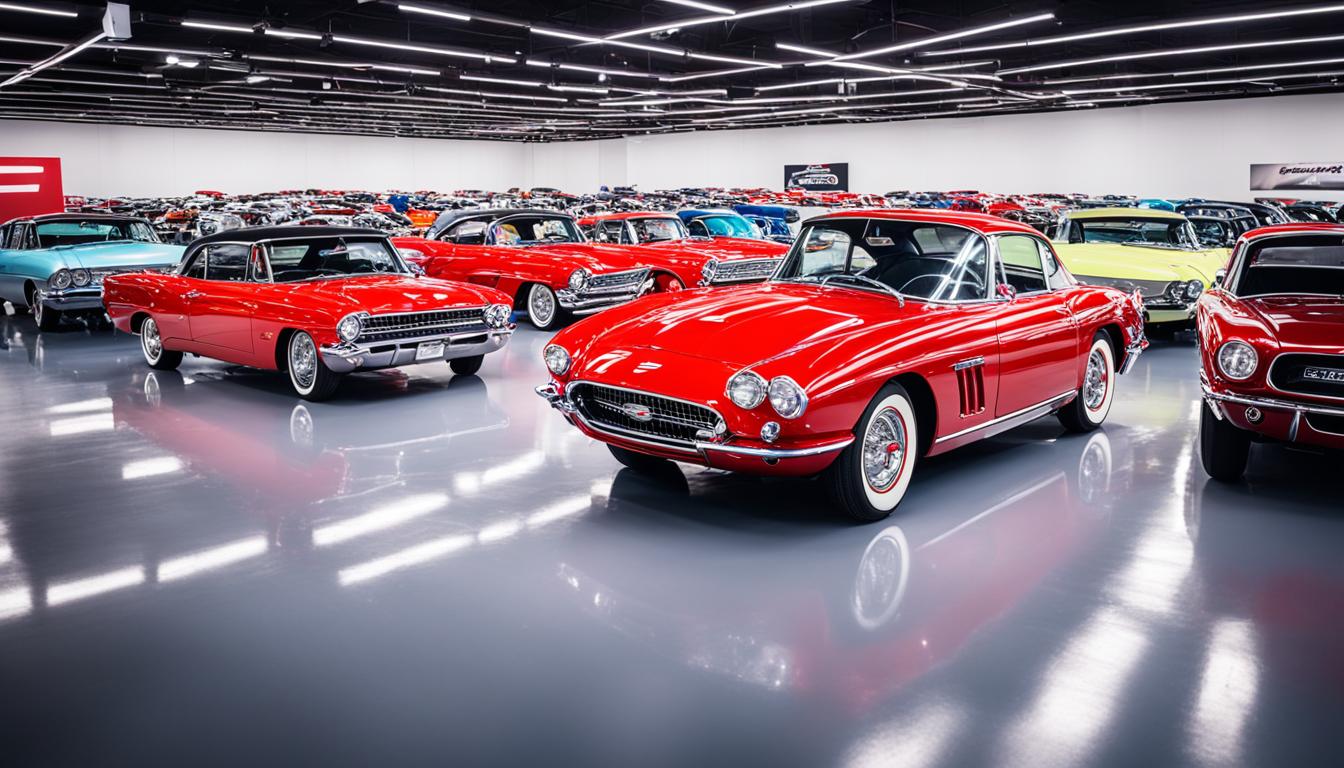When it comes to acquiring your dream classic car, the world of vehicle auctions can be an alluring, yet intriguing realm. As we delve into the pros and cons of purchasing restored vehicles at these dynamic events, we’ll uncover the hidden gems and potential pitfalls that await the savvy automotive enthusiast.
Restored vehicles offer a unique charm, blending the timeless elegance of the past with the reliability of modern refurbishments. At auctions, we have the chance to explore a diverse selection of these meticulously revived automotive marvels, each with its own captivating history and potential for future enjoyment.
However, the process of restoration and the dynamics of the auction floor can present their own set of challenges. It’s crucial to understand the intricacies of the restoration process, as well as the potential risks associated with bidding on these prized possessions. By navigating these waters with care and diligence, we can uncover the alluring benefits of owning a restored classic while avoiding the potential pitfalls that may lurk beneath the surface.
Exploring the World of Restored Vehicles at Auctions
Delving into the realm of restored classic cars, we uncover a fascinating journey that begins with the restoration process. This intricate endeavor breathes new life into timeless vehicles, bringing them back to their former glory. From meticulously refurbishing the interior to expertly refinishing the exterior, the restoration process is a labor of love that transforms a classic into a showpiece.
Understanding the Restoration Process
The restoration process for classic cars is a multi-faceted undertaking that requires a keen eye for detail and a deep understanding of the vehicle’s history. Skilled craftsmen meticulously disassemble each component, carefully inspecting and repairing or replacing parts as needed. The bodywork is meticulously restored, with dents and scratches painstakingly removed, and the paint finish is brought back to its original luster.
Evaluating Auction Dynamics and Potential Risks
With the restoration process complete, these prized possessions find their way to the exhilarating world of classic car auctions. The dynamics of these events can be both thrilling and daunting, as bidders compete to secure their dream vehicles. However, the potential risks of buying at auctions must be carefully considered. Thorough due diligence is essential to ensure the authenticity and condition of the restored vehicle, mitigating the risks of unexpected issues or hidden flaws.
| Restoration Process for Classic Cars | Classic Car Auction Dynamics | Potential Risks of Buying at Auctions |
|---|---|---|
|
|
|
By understanding the restoration process and the dynamics of classic car auctions, prospective buyers can make informed decisions and navigate the potential risks with greater confidence. Thorough due diligence, including detailed inspections and research, is essential to ensure a successful and rewarding purchase experience.
“The restoration process is a true labor of love, transforming a classic car into a showpiece that captures the essence of its bygone era.”
Restored Vehicles: The Alluring Benefits
As we delve into the world of restored vehicles, it’s clear that the allure extends far beyond mere aesthetics. Owning a meticulously restored classic car is an opportunity to own a piece of automotive history, with the potential for investment growth and the sheer joy of driving a truly one-of-a-kind vehicle.
One of the primary benefits of purchasing a restored vehicle is the chance to preserve and showcase a bygone era. These cars are not merely modes of transportation; they are rolling works of art, each with a unique story to tell. By investing in a restored classic, you’re not just buying a car – you’re acquiring a tangible link to the past, a chance to experience the craftsmanship and design that defined a bygone era.
Beyond the sentimental value, restored vehicles can also offer significant investment potential. As the demand for rare and well-preserved classics continues to rise, savvy collectors understand the value of owning a vehicle that has been painstakingly restored to its former glory. With proper care and maintenance, these investments can appreciate in value over time, making them a wise choice for those seeking to diversify their portfolios.
But the benefits of owning a restored vehicle go beyond mere financial considerations. The sheer joy of driving a meticulously restored classic is unparalleled. The smooth handling, the powerful engine, and the attention-grabbing style all come together to create an unparalleled driving experience that simply cannot be replicated by modern vehicles. It’s a chance to truly connect with the past and experience the thrill of motoring as it was meant to be.
“Restoring a classic car is not just about fixing it up – it’s about bringing back a piece of history and sharing that passion with others. It’s a labor of love that pays dividends in the form of pure driving pleasure.”

In summary, the alluring benefits of owning a restored vehicle extend far beyond the surface-level aesthetics. From the opportunity to own a piece of automotive history to the potential for investment growth and the sheer joy of driving a meticulously restored classic, the appeal of these vehicles is undeniable. For those seeking a truly unique and rewarding automotive experience, a restored vehicle may be the perfect choice.
Navigating the Potential Pitfalls
As exciting as buying restored vehicles at auctions can be, it’s crucial to navigate the potential pitfalls with care. We’ll delve into the common challenges and considerations you should keep in mind to make an informed decision.
Common Challenges and Considerations
One of the primary concerns when purchasing a restored vehicle is the quality of the restoration work. While some auction houses may provide detailed histories and inspections, it’s essential to conduct your own thorough evaluation. Look for signs of subpar repairs, hidden damage, or undisclosed modifications that could impact the vehicle’s performance and longevity.
Additionally, understanding the vehicle’s history is paramount. Researching the previous owners, maintenance records, and any incidents or accidents can help you uncover potential issues that may not be immediately apparent. It’s wise to be cautious of vehicles with unclear histories or questionable documentation, as these could conceal underlying problems.
Finally, consider the financial implications of acquiring a restored vehicle. Factor in the auction price, potential repair costs, and ongoing maintenance requirements to ensure the investment aligns with your budget and expectations. By being mindful of these considerations, you can navigate the potential pitfalls and make a confident decision when purchasing a restored vehicle at an auction.

